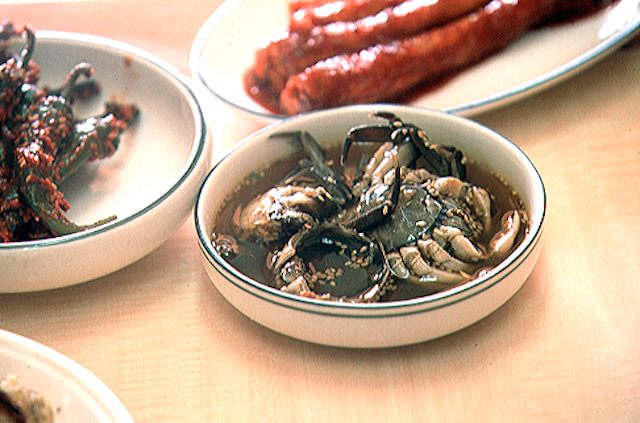Found: A Perfectly Preserved Sac of Fluke Eggs on a 400-Year-Old Mummy’s Liver
In the 17th century, delicious fresh crab dishes had certain dangers.

Jing Lee was born in 1580, during Korea’s long-lasting Joseon dynasty, and died in 1642, at the age of 63. At some point in his long life, he ate a raw, freshwater crustacean, in one form or another. Most likely, he was indulging in a fresh, seasonal treat—raw crabs with soy sauces—or was trying to rid himself of disease, with a dose of crayfish juice, thought to help treat the measles. (Joseon food culture was not to be trifled with.) However, as it happened, his crustacean meal left a lasting legacy in his body: a sac of liver fluke eggs growing happily in his liver, as Haaretz reports.
Four hundred years later, as part of a parasitology study of pre-modern Korean societies, a team of scientists found that egg sac mummified on Jing Lee’s liver. They report their findings in a new study in the Journal of Parasitology.

Researchers from the Seoul National University College of Medicine have been studying Joseon mummies, unusually well preserved by a combination of burial customs and the environment of their tombs, with the aim of understanding how parasites affected the health of people hundreds of years ago. This mummy was first discovered in October 2014, in a 17th-century tomb in the southeastern part of South Korea. With permission from Jing Lee’s clan, the scientists removed the mummy from the tomb and started studying these remains.
In their work, these scientists have already found evidence of a handful of parasites in Korean mummies. (Coprolites, a.k.a. fossilized feces, are a major source of information about parasites from the past.) But what they saw when they scanned this mummy was unique. There was an abscess on the man’s liver, and after the team autopsied the liver and analyzed the contents of the abscess, they were able to identify the lump as a growth of Paragonimus eggs.

Before making their home in human bodies, these parasites like to live in aquatic snails, from which they pass into crustaceans. When humans eat those crustaceans, the parasites enter the body along with them. These tiny creatures are still a threat to people today: 293.8 million people are at risk of infection, according to a recent study. Once the parasites infect the human body, they can cause stomach pains, fever, and other unpleasant symptoms. Jing Lee was lucky, in some way, that the parasites settled in on his liver. It’s much more unpleasant if they make their home in a person’s lungs or brain.










Follow us on Twitter to get the latest on the world's hidden wonders.
Like us on Facebook to get the latest on the world's hidden wonders.
Follow us on Twitter Like us on Facebook